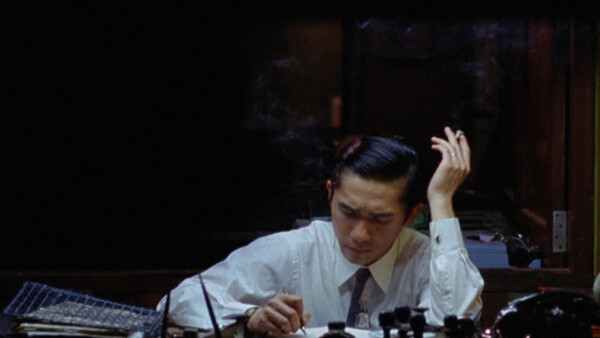Explorers, cartographers and rulers have called this part of the world Further India, the East Indies, the Malay Archipelago, Indochina, Nusantara (Javanese for "Outer Islands"), and Nanyang (Chinese for “South China Seas”). It appears endlessly through the lens of ethnography, geopolitics, premodern glory, and fetishistic fantasies.
The question of what constitutes the region we now call Southeast Asia is at the centre of various projects by the artist Ho Tzu Nyen. These works explore how narratives construct shared identities and beliefs; genealogies of authorship and authority; and shape-shifting and amorphous characters.
This return to history appears in Ho’s 2015 video film The Nameless, a pastiche possibly about a real-life figure who had more than fifty names. His aliases included Lai Teck, Loi Tak, Lai Te, Lai Rac, Nguyen Van Long, Hoang A Nhac, Pham Van Dac, Chang Hong, Soh King, Mr Wright, Mr Light, Wong Show Tong, Wong Kim Gyock, Ah Le, Ah Lin, and the Lenin of Malaya. He was born in Nghe An or Phan Rang, in present-day central Vietnam, or Saigon, circa 1900. He was active in the communist parties in Indochina, Hong Kong, Canton, and Shanghai, and was recruited for training in Moscow around 1930. After being jailed and passed between the British and French security forces, he became a spy for the British and the Japanese in Singapore, and even the Secretary General of the Malayan Communist Party. He betrayed countless people to police and colonial forces, became known as “the greatest traitor in the history of the Malayan Communist Party”, and was himself assassinated, supposedly suffocated in Thailand. We can read Lai Teck as a metaphor for the countless nameless people who had to navigate the treacherous and constantly shifting borders of uncertain futures.
This was during the tumultuous interwar years of the 1920s to 1940s when anti-colonial movements from the Indian subcontinent to Indochina gained momentum despite repeated suppression by the European colonial powers. Concurrent with these seismic shifts was the rapid transformation of Japan into a modern military force eager to become an imperial power itself. Having proven its might in the Russo-Japanese War (1904–5), Japan represented to the future leaders of colonised Asia the urgency of modernising their societies as a means to rid themselves of their oppressors. These future leaders also navigated the Scylla and Charybdis of shady and dangerous alliances with imperial powers and regional factions, at times forced to put aside their reservations to achieve strategic goals towards national → liberation.[1]
For his Vietnamese and Mandarin, two-channel synchronised video, Ho casts Tony Leung Chiu-wai as the Nameless. The Hong Kong actor has starred in nearly one hundred films, a repertoire of ready-made performances that Ho spliced together to create a fragmentary narrative. We see Leung as the gangster poet in Cyclo (Tran Anh Hung, 1995), the romantic Chow Mo-wan in In the Mood for Love (Wong Kar Wai, 2000), the devious politician Mr. Yee in Lust, Caution (Ang Lee, 2007), and the legendary Ip Man of the Northern School of kung fu in The Grandmaster (Wong Kar Wai, 2013). (Figure 18) These characters lived in times of monumental shifts – the embrace of the market economy by the Communist Party in Vietnam, the anti-British → revolts and flood of immigrants from mainland China into 1960s Hong Kong, and Japanese colonialism in 1930s and 1940s China and Hong Kong. Taken together, these characters are studies on the nature of identity – its contingent and shifting performances of stability amidst chaos and the role of storytelling in shaping our memories and perceptions of larger-than-life figures.
 Ho Tzu Nyen, The Nameless, 2015, synchronized double-channel HD projection on 2 sides of a screen, scrim wall separation, double 5.1 sound systems, duration: 21´51´´. Courtesy of the artist and Kiang Malingue Gallery.
Ho Tzu Nyen, The Nameless, 2015, synchronized double-channel HD projection on 2 sides of a screen, scrim wall separation, double 5.1 sound systems, duration: 21´51´´. Courtesy of the artist and Kiang Malingue Gallery.
The fiction of this retelling is ever present in the conflict between the audible and visual. The voiceover presents a chronological narrative of Lai Teck’s ever-changing identities and betrayals, a man whom the film tell us is “every name in history”. We see the same actor over three decades, but the Nameless himself is a mélange of characters and indexical images taken out of context. The film is held together by a series of repeated gestures cut from different films – the character smoking, fleeing, hiding, entering a room. Like history, the story comprises motifs and scenes that with repetition suggest coherence. It is a narrative of performances, of characters entwined in treachery and uncertainty.
This meta-narrative abounds with fabricated stories, unreliable narrators, and fantastic representations. In tracing Lai Teck as a historical figure, The Nameless offers a non sequitur to the simplified structures of colonialist, nationalist and popular representations of a place called Southeast Asia.

